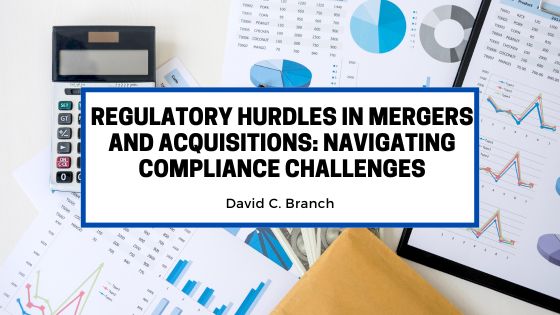Mergers and acquisitions (M&A) are complex transactions that involve various legal, financial, and regulatory considerations. One significant aspect of M&A deals is navigating regulatory hurdles imposed by government agencies and regulatory bodies. These hurdles can vary depending on the industry, the countries involved, and the transaction size. In this blog post, we’ll explore some common regulatory challenges faced by companies engaged in M&A activities and discuss strategies for navigating compliance requirements.
Antitrust and Competition Laws
One of the primary regulatory hurdles in M&A transactions is compliance with antitrust and competition laws. These laws promote fair competition, prevent monopolistic practices, and protect consumer interests. Companies engaging in M&A activities must carefully assess the potential impact of their transactions on market competition and ensure compliance with antitrust regulations.
Regulatory authorities, such as the Federal Trade Commission (FTC) in the United States and the European Commission’s Directorate-General for Competition (DG COMP) in the European Union, review M&A transactions to assess their potential anticompetitive effects. If a proposed merger or acquisition is deemed to lessen competition or create a monopoly substantially, regulatory approval may be withheld, or conditions may be imposed to mitigate antitrust concerns.
To successfully navigate antitrust and competition laws, companies should conduct thorough due diligence to identify potential antitrust issues early in the M&A process. This may involve analyzing market concentration, competitive dynamics, and potential barriers to entry. Companies should also proactively engage with regulatory authorities, provide relevant information and data, and propose remedies to address any potential antitrust concerns.
Foreign Investment Regulations
In cross-border M&A transactions, companies must also contend with foreign investment regulations imposed by the countries involved. These regulations are designed to safeguard national security, protect strategic industries, and ensure foreign investments do not pose undue risks to domestic interests.
Foreign investment regulations vary widely from country to country. They may include requirements for obtaining government approval, conducting national security screenings, and complying with restrictions on foreign ownership or control of certain assets or industries.
Navigating foreign investment regulations requires careful planning and coordination with legal advisors and regulatory authorities in the countries involved. Companies should assess the regulatory landscape early in the M&A process, identify potential regulatory risks and requirements, and develop strategies to address them effectively.
Data Privacy and Cybersecurity Compliance
Data privacy and cybersecurity have become significant concerns in M&A transactions in an increasingly digital world. Companies must ensure compliance with data protection regulations, such as the European Union’s General Data Protection Regulation (GDPR) and the California Consumer Privacy Act (CCPA), which impose strict requirements for handling and protecting personal data.
Failure to comply with data privacy and cybersecurity regulations can result in severe financial penalties, reputational damage, and legal liabilities. Companies engaged in M&A activities must conduct comprehensive due diligence to assess data privacy and cybersecurity risks associated with target companies and develop strategies to mitigate these risks post-acquisition.
This may involve implementing robust data protection measures, conducting cybersecurity audits, and developing incident response plans to effectively address potential data breaches or security incidents.
Conclusion
Navigating regulatory hurdles in M&A transactions is a complex and challenging endeavor that requires careful planning, diligence, and expertise. Companies engaged in M&A activities must know the regulatory landscape, understand the potential compliance challenges, and develop strategies to address them effectively.
By engaging with legal advisors, regulatory authorities, and other stakeholders early in the M&A process, companies can identify potential regulatory risks and requirements, develop compliance strategies, and mitigate regulatory hurdles to complete their transactions successfully. With proper planning and diligence, companies can navigate regulatory challenges and unlock the value of M&A opportunities while ensuring compliance with applicable laws and regulations.

